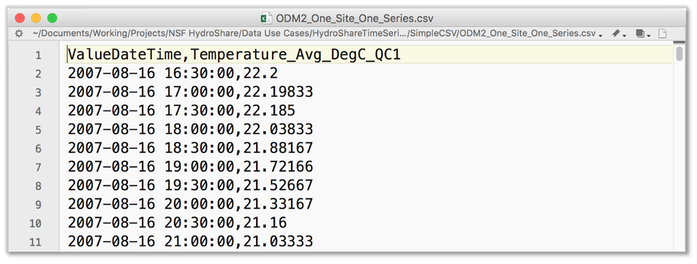Multiple time series can be packaged together in a single resource using either multiple .csv files or a single .csv (or a sqlite database). For example:
- All of the time series for a particular variable within your research watershed across all sites
- All of the time series for all variables measured at a single site
- All of the time series output by a particular model run or instance
The following is an example of the first few lines of a .csv file containing a single time series of water temperature values. To be recognized as time series data, .csv files may have any number of data columns to represent different variables, methods, sites, etc. Data columns must:
- Have unique column names.
- Share a single date/time column named “ValueDateTime.”
The date/time values should be in the format “yyyy-mm-dd hh:mm:ss” for correct interpretation by HydroShare. The correct UTC Offset for the date/time values can be added as part of the metadata.

